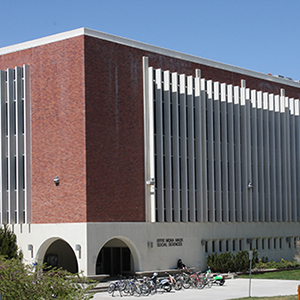Adaptive optics is a technology developed for astronomic imaging but also currently used to image the retina of the eye. Traditional optics are not effective at resolving the image at the scale needed, as optical aberrations blur the image. AO solves this by combining a device that measures the aberrations with a mirror that deforms in shape to correct for optical aberrations. In doing so, it returns a clear image of the retina. It can be used for both research and ophthalmological diagnosis of clinical conditions. The system is not a complete device suite but instead is being built in collaboration with established AO labs at UC Berkeley.
The AOSLO system combines a 3-channel scanning laser ophthalmoscope system (SLO) with an additional channel for adaptive optics (AO) technology and is based on system designs currently in Berkeley in the lab of Dr. Austin Roorda, and the lab of Dr. Ramkumar Sabesan at the University of Washington. The system provides the ability to image, stimulate, and identify individual photoreceptors in the intact human eye. The system is also confocal, allowing the imaging of additional retinal elements at different retinal depths as the focal plane is adjusted. The system utilizes a super-continuum laser source to provide source light at multiple wavelengths (currently 543, 680, 830, 940 nm). The SLO portion of the system uses a system of lenses and mirrors to produce a tiny beam that is scanned across the retina. The small amount of light reflected from the eye is confocally imaged on pinholes at the entrance of three detectors (photomultiplier tubes), one for each wavelength. The changes in intensity of light at the detector over time is computed for each position of the scanning mirrors and video images are reconstructed from these data. The major components of the AO portion include a light source (the 940 nm channel from the supercontinuum laser), a way to measure optical imperfections/aberrations (Shack-Hartmann wavefront sensor), and a way to correct the image (computer-controlled deformable mirror). Image imperfections are constantly monitored and corrected in a closed-loop at 30Hz). There are also provisions in the system and software to monitor and correct for eye movements using n feature detection algorithm, providing image stabilization and eye-tracking at cellular scales. This property allows for stimulation of individual cones in a patch for extended periods of time if required. The subject’s eye position and pupil can be monitored with a CCD camera aimed at the eye. Finally, there is an option to add in a projector channel that provides the capability to project images, patterns, or backgrounds when designing experiments.
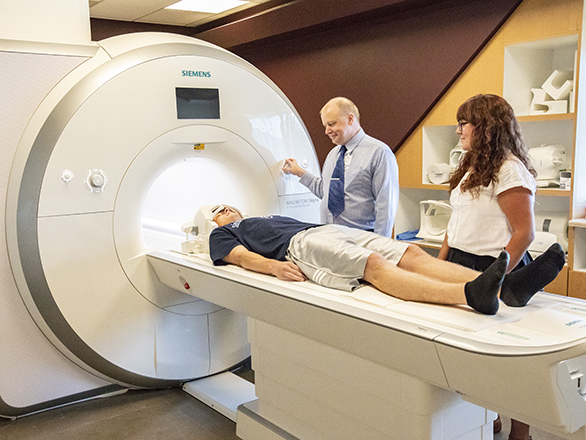
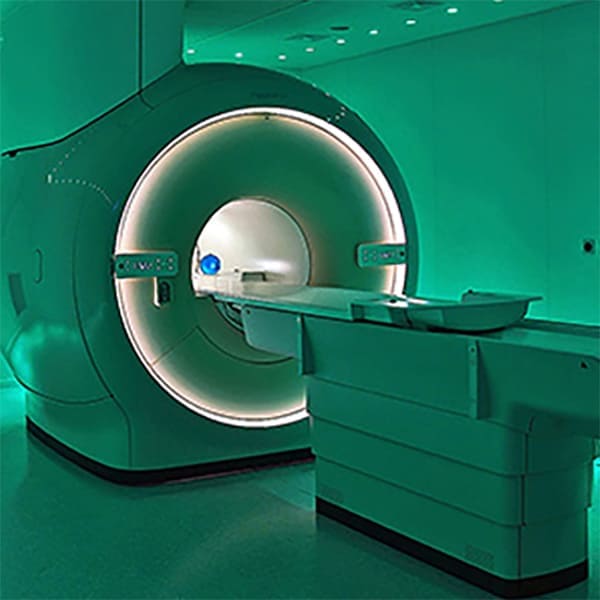 Magnetic Resonance Imaging (MRI) is a non-invasive technology used by researchers to study brain anatomy and function. MRI uses a strong magnetic field and radio waves to measure signals emitted by excited hydrogen atoms present in various types of bodily tissue. These signals are converted into images that show different degrees of contrast for different tissue types, which allows researchers to create detailed anatomical images of the brain. Functional MRI (or fMRI) uses MRI technology to measure brain activity, which can then be superimposed on images of brain anatomy from MRI. Unlike MRI, fMRI measures blood-oxygen-level dependent (BOLD) signals that indicate the amount of blood in different areas of the brain. Blood volume increases as a function of neural activity because the brain does not store the glucose needed to provide energy to the metabolically "expensive" activity of its neurons, and blood must be shunted to brain regions that are most active. Like EEG, fMRI measures the activity of large populations of neurons. However, the spatial resolution of fMRI is much greater than that of EEG-fMRI has fine spatial resolution but poor temporal resolution (unlike EEG). Researchers at the University of Nevada, Reno, are using fMRI to study a broad spectrum of cognitive and perceptual abilities including vision, memory, and uniquely human skills such as reading.
Magnetic Resonance Imaging (MRI) is a non-invasive technology used by researchers to study brain anatomy and function. MRI uses a strong magnetic field and radio waves to measure signals emitted by excited hydrogen atoms present in various types of bodily tissue. These signals are converted into images that show different degrees of contrast for different tissue types, which allows researchers to create detailed anatomical images of the brain. Functional MRI (or fMRI) uses MRI technology to measure brain activity, which can then be superimposed on images of brain anatomy from MRI. Unlike MRI, fMRI measures blood-oxygen-level dependent (BOLD) signals that indicate the amount of blood in different areas of the brain. Blood volume increases as a function of neural activity because the brain does not store the glucose needed to provide energy to the metabolically "expensive" activity of its neurons, and blood must be shunted to brain regions that are most active. Like EEG, fMRI measures the activity of large populations of neurons. However, the spatial resolution of fMRI is much greater than that of EEG-fMRI has fine spatial resolution but poor temporal resolution (unlike EEG). Researchers at the University of Nevada, Reno, are using fMRI to study a broad spectrum of cognitive and perceptual abilities including vision, memory, and uniquely human skills such as reading.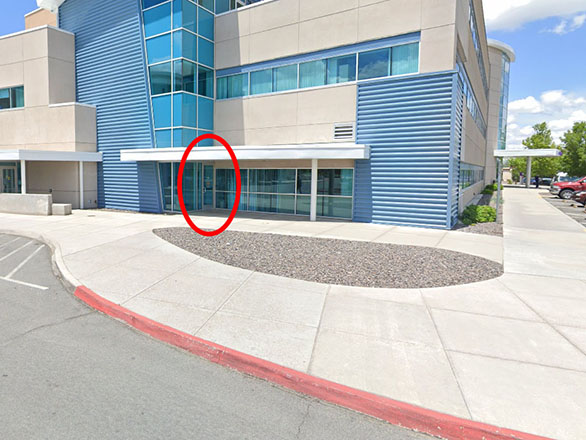
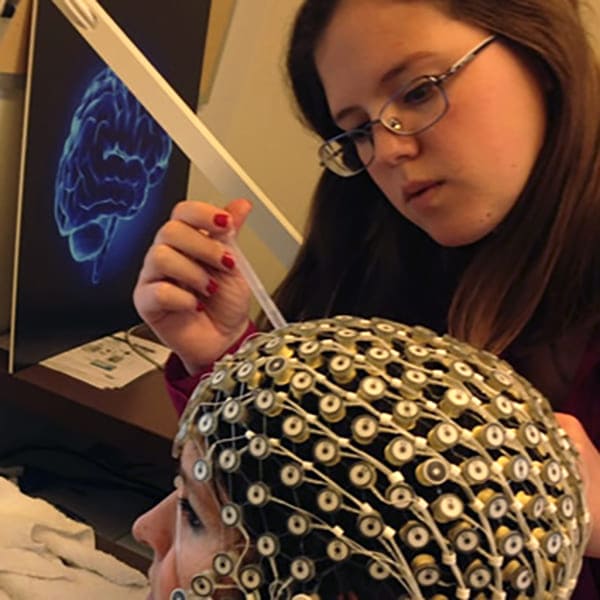 Electroencephalography (EEG) is a non-invasive technology that measures voltage fluctuations on the scalp that result from the synchronized activity of large groups of neurons in the brain. In some cases, this activity is associated with a particular stimulus or task. For instance, evoked potentials (EPs) and event-related potentials (ERPs) involve the time-locking of stimulus presentation (e.g. visual or auditory) to the measurement of scalp potentials. EEG has high temporal resolution (on the order of milliseconds), which gives it an advantage over other neuroimaging technologies such as fMRI and fNIRS. Because of its high temporal resolution, EEG activity can be correlated with specific stimulus events and behaviors at a very fine time scale. On the other hand, the spatial resolution of EEG is limited. To overcome this limitation, researchers at the University of Nevada, Reno use high-density array EEG systems. Researchers may use either a 256-channel EGI Net Amps system or a 128-channel Biosemi ActiveTwo system. Each system has its own strengths and can be used to measure brain activity including determining the source of EEG signals in the brain. State-of-the-art neuroimaging software is available for processing and analysis.
Electroencephalography (EEG) is a non-invasive technology that measures voltage fluctuations on the scalp that result from the synchronized activity of large groups of neurons in the brain. In some cases, this activity is associated with a particular stimulus or task. For instance, evoked potentials (EPs) and event-related potentials (ERPs) involve the time-locking of stimulus presentation (e.g. visual or auditory) to the measurement of scalp potentials. EEG has high temporal resolution (on the order of milliseconds), which gives it an advantage over other neuroimaging technologies such as fMRI and fNIRS. Because of its high temporal resolution, EEG activity can be correlated with specific stimulus events and behaviors at a very fine time scale. On the other hand, the spatial resolution of EEG is limited. To overcome this limitation, researchers at the University of Nevada, Reno use high-density array EEG systems. Researchers may use either a 256-channel EGI Net Amps system or a 128-channel Biosemi ActiveTwo system. Each system has its own strengths and can be used to measure brain activity including determining the source of EEG signals in the brain. State-of-the-art neuroimaging software is available for processing and analysis.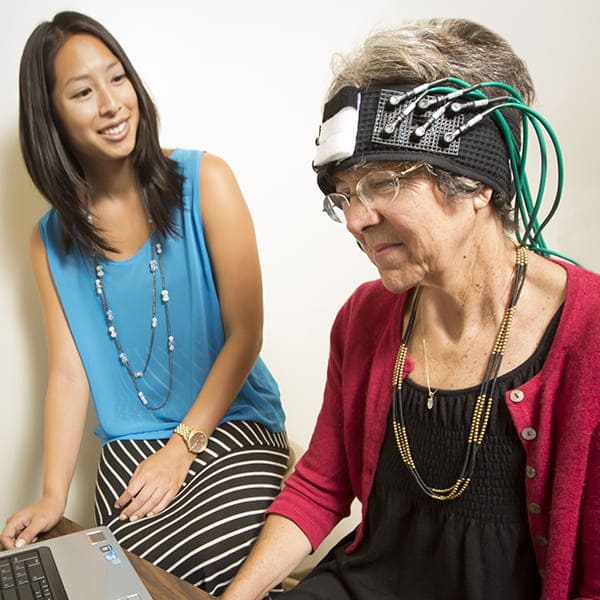 Near-infrared spectroscopy (NIRS) is a non-invasive means of measuring brain activity. If you hold a flashlight to the palm of your hand in the dark you can see that its light will travel through several centimeters of tissue. NIRS affords optical brain imaging at centimeter depth by projecting near-infrared wavelength light through the skull and measuring how much has been absorbed by the hemoglobin in your blood. That is, NIRS indirectly measures brain activity by measuring the amount of oxygenated and deoxygenated hemoglobin in a particular region of the brain-this relies on the fact that active areas of the brain require blood to sustain neural activity, which is metabolically taxing. NIRS thus allows researchers to "see" brain activity, which is essential to understanding the function of the human brain. We therefore sometimes refer to this use of NIRS technology as "functional NIRS" or fNIRS. Researchers at the University of Nevada, Reno, are using fNIRS and other neuroimaging technologies-including functional MRI (fMRI) and high-density array EEG to study a variety of human cognitive and perceptual abilities.
Near-infrared spectroscopy (NIRS) is a non-invasive means of measuring brain activity. If you hold a flashlight to the palm of your hand in the dark you can see that its light will travel through several centimeters of tissue. NIRS affords optical brain imaging at centimeter depth by projecting near-infrared wavelength light through the skull and measuring how much has been absorbed by the hemoglobin in your blood. That is, NIRS indirectly measures brain activity by measuring the amount of oxygenated and deoxygenated hemoglobin in a particular region of the brain-this relies on the fact that active areas of the brain require blood to sustain neural activity, which is metabolically taxing. NIRS thus allows researchers to "see" brain activity, which is essential to understanding the function of the human brain. We therefore sometimes refer to this use of NIRS technology as "functional NIRS" or fNIRS. Researchers at the University of Nevada, Reno, are using fNIRS and other neuroimaging technologies-including functional MRI (fMRI) and high-density array EEG to study a variety of human cognitive and perceptual abilities.